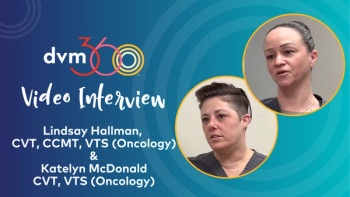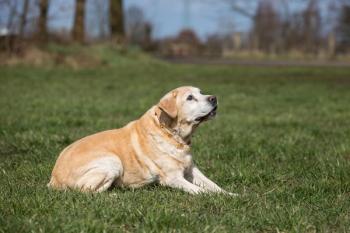“Kittens with cleft palate often fail to thrive, meaning they don’t gain weight as they should,” said Adriana Regalado-Ibarra, MVZ, DAVDC. “Without constant care, they usually succumb to malnutrition or respiratory infection early on.”
Allison Roy, Luna’s owner, has been a Persian cat breeder for more than 20 years and immediately recognized Luna’s abnormal symptoms, such as the inability to latch and sneeze while nursing. Luna was then diagnosed with both hard and soft cleft palate after developing aspiration pneumonia. Unlike other cases where 1 palate remains intact, Luna’s was more severe. She lacked a partial barrier to separate her mouth and nasal cavity, so swallowing safely was impossible and increased her risk of complications. To help Luna, she was tube fed, approximately 8 times a day initially, and had around-the-clock care, which significantly improved her health.
“It was exhausting but worth every second,” Roy said. “By 12 weeks, when the other kittens were heading to their new families, Luna had grown just as big and healthy as the rest. She was always full of life and never let her condition stop her, but she deserved more than a life of tube feeding.”
Roy consulted with specialists across Texas trying to find a permanent solution for Luna’s condition, but their recommendations were unsatisfactory for Roy, with some suggestions being removing all of her teeth or permanently inserting a feeding tube in Luna’s neck.1 After a friend encouraged Roy to reach out to Texas A&M's SATH, she began researching the hospital, found Regaldo, and decided she needed to reach out.
Surgery and its aftermath
Cleft palate symptoms in feline patients
Clients and veterinary professionals usually notice at birth or when the cat is still a kitten the symptoms of cleft palate, which include2:
- Difficult nursing (milk coming out of nose).
- Nasal congestion and discharge.
- Visible spit in upper lip or roof of the mouth.
Cleft palate repairs are more commonly documented and performed in dogs, so addressing feline causes presents with unique challenges because of the anatomical difference. Regaldo adapted techniques and materials that are not normally used for feline cleft palate repairs to battle against the complexities, making it a university first.
“We used a horse-derived bone membrane to support the surrounding tissue, close the gap in Luna’s palate, and promote natural tissue and bone regeneration,” Regalado said. “This material undergoes mineral removal to transform the rigid bone into a flexible structure, making it suitable for delicate surgical procedures.”
Regaldo exposed Luna’s palate bone during the surgery, which lasted more than 2 hours, before suturing a custom-fit equine membrane to its thin edges, a procedure that demands extreme precision to not damage the turbinates. After it was secured, the membrane was covered with soft tissue from the palate to allow the rich blood supply from the palatal mucosa. This will promote healing and help the membrane integrate seamlessly with the surrounding tissue.1 A temporary siliconelike layer was applied over the repaired defect to protect the reconstruction from potential disruption, which will either fall off naturally or be removed easily as the tissue underneath stabilizes and heals.
For Luna, the transformation was immediate, and she was able to eat independently for the first time in her life. Her recovery was also "remarkably smooth," according to Texas A&M's SATH, and she was able to adapt easily and quickly to her new freedom.
“Watching her take her first bites of food on her own—it was beyond words,” Roy said. “I had spent 18 months tube feeding her, and suddenly, she was normal. I am beyond grateful.”
Not only is Luna’s case a success story, but it is also now serving as a breakthrough for the Texas A&M veterinary team and feline cleft palate research. The insights that Regaldo and her team gained from Luna’s surgery will be documented and shared to potentially help other owners and animals facing similar challenges.
References
- Cela S. Texas A&M Veterinarians restore Persian cat’s ability to eat. Texas A&M University College of Veterinary Medicine & Biomedical Sciences. October 9, 2025. Accessed October 13, 2025. https://vetmed.tamu.edu/news/press-releases/texas-am-veterinarians-restore-persian-cats-ability-to-eat/
- Koehler R. Cleft palate in cats: treatment and more. PetMd. December 9, 2024. Accessed October 13, 2025. https://www.petmd.com/cat/conditions/mouth/cleft-palate-cats-treatment-and-more







